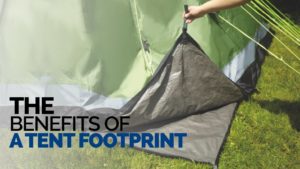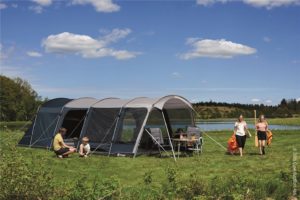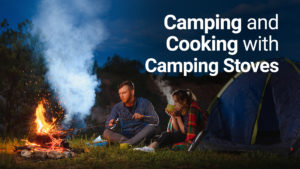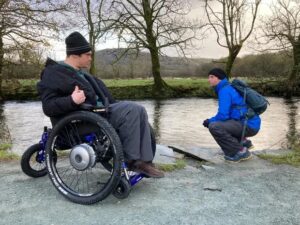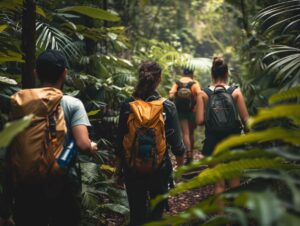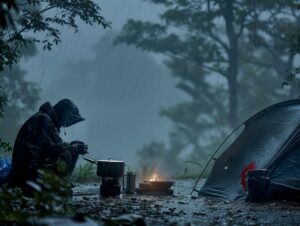
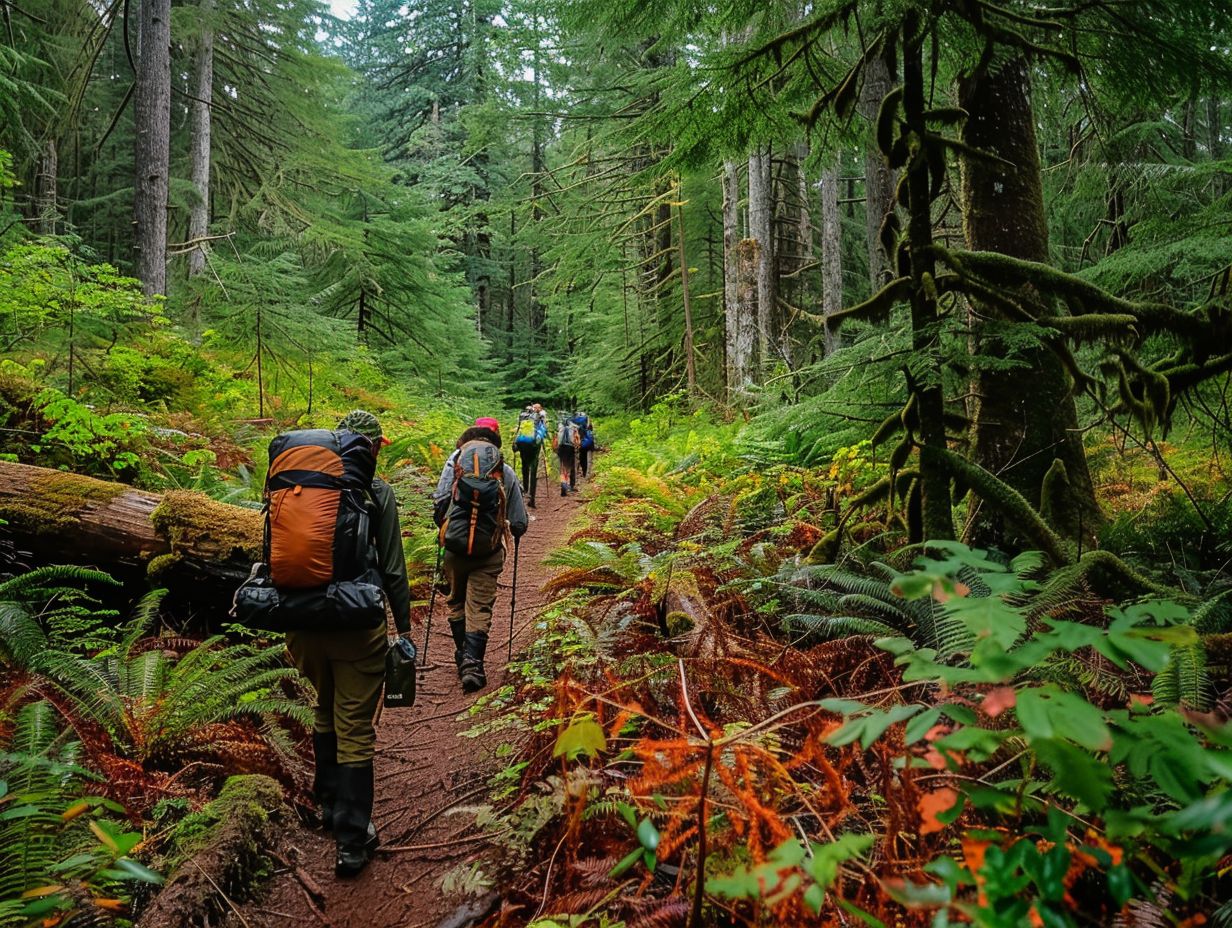
Vaibhav
- Categories: Advice
Looking to escape the hustle and bustle of daily life and immerse yourself in nature?
A multi-day hiking and camping trip could be just what you need.
This article explores the reasons why planning a multi-day hiking and camping trip is worth it, how to choose the perfect destination, what gear you’ll need, how to plan your route and itinerary, what food and water to bring, how to prepare physically and mentally, and important safety precautions to take.
Whether you’re a seasoned hiker or new to the world of camping, this guide will help you prepare for a memorable adventure in the wilderness.
Key Takeaways:

- Plan a multi-day hiking and camping trip for a chance to experience nature, improve physical and mental health, and bond with loved ones.
- When choosing a destination, consider fitness level, terrain, and weather, and check for permit requirements to ensure a safe and enjoyable trip.
- Pack essential gear such as a tent and food, and consider optional gear like a GPS and camp stove. Plan your route and itinerary based on daily mileage, campsite availability, and rest days.
Why Plan a Multi-Day Hiking and Camping Trip?
It is imperative for backpackers intending to engage in a multi-day hiking and camping expedition to meticulously plan their trip. Such planning is crucial for individuals seeking to fully immerse themselves in natural surroundings, explore remote wilderness areas, and undertake an outdoor excursion that presents both physical and mental challenges.
1. Experience Nature
Engaging in a multi-day hiking and camping expedition facilitates a complete immersion in the splendour of nature, encompassing awe-inspiring trails and tranquil outdoor settings accessible solely through a backpacking adventure.
The act of immersing oneself in the natural world fosters an unparalleled connection with natural landscapes, including lush forests, majestic mountains, and meandering rivers. These varied environments provide a habitat for a diverse array of wildlife species, making them particularly appealing to enthusiasts interested in wildlife observation.
The seclusion and absence of light pollution experienced while camping beneath the star-studded sky present an optimal opportunity for indulging in the contemplation of astronomical phenomena and marvelling at the wonders of the universe above.
2. Physical and Mental Health Benefits
Embarking on an extended hiking expedition offers a multitude of physical and mental health advantages. The physical exertion involved in hiking contributes to the strengthening of the body, while the immersive experience and tranquil surroundings serve to alleviate stress and enhance mental acuity.
Research indicates that hiking can significantly enhance cardiovascular health by diminishing the likelihood of heart disease and hypertension. The diverse topography and varying degrees of incline encountered during a hiking expedition engage distinct muscle groups, leading to overall muscle fortification and toning.
The rhythmic motion characteristic of hiking can also induce a meditative state, fostering mental relaxation and reducing anxiety levels. Health professionals advocate for regular hiking as a natural means to enhance both physical fitness and mental well-being.
3. Bonding with Friends and Family
A multi-day backpacking expedition into the backcountry presents a distinct opportunity for individuals to form strong bonds with friends and family. The collective experiences of camping, hiking, and overcoming challenges together forge lasting memories.
These collective hiking and camping endeavors nurture a spirit of comradeship and cooperation among participants. Each member contributes to the group’s success by participating in tasks such as camp set-up, meal preparation, and trail navigation.
This shared responsibility promotes a sense of harmony and teamwork among individuals, thereby strengthening their relationships.
By disconnecting from technology, deeper connections with nature and loved ones become achievable. Engaging in conversations around the campfire, stargazing, and sharing stories are cherished moments that enrich relationships and promote a sense of togetherness.
How to Choose a Hiking and Camping Destination?
When selecting a hiking and camping destination, it is essential to take into account various factors. These factors may include your level of fitness, the terrain and weather conditions of the area, as well as any permit requirements that are applicable to the specific location you intend to explore.
1. Consider Your Fitness Level
When selecting a hiking destination, it is imperative to take into account your fitness level to ensure that the trails and overall excursion align with your physical abilities. Commence by evaluating your present fitness level and maintain honesty regarding your capacities.
Novices should consider selecting well-marked and relatively flat trails of short distances to ease the initiation into hiking. Intermediate hikers may seek out trails with moderate elevation gains and longer distances to test themselves without excessively taxing their stamina.
Advanced hikers might gravitate towards steep and rugged terrains that offer a heightened level of challenge. It is essential to conduct thorough research on trail reviews and seek recommendations to evaluate the trail’s level of difficulty and appropriateness in accordance with your fitness level.
2. Research the Terrain and Weather
It is imperative to conduct thorough research on the terrain and weather conditions of your selected hiking destination to ensure adequate preparedness for the challenges encountered along the trail.
To acquire information regarding terrain characteristics, individuals can refer to topographic maps that offer detailed elevation data and land features. Online platforms such as AllTrails provide access to user-generated reviews and photographs that offer valuable insights into specific trails.
Regarding weather patterns, websites like the National Weather Service and Met Office provide forecasts, climate statistics, and historical weather data for the geographical region of your planned hike.
Engaging with online hiking communities can also prove advantageous, as seasoned hikers often share firsthand experiences and advice on navigating diverse terrains and weather conditions.
3. Check for Permit Requirements
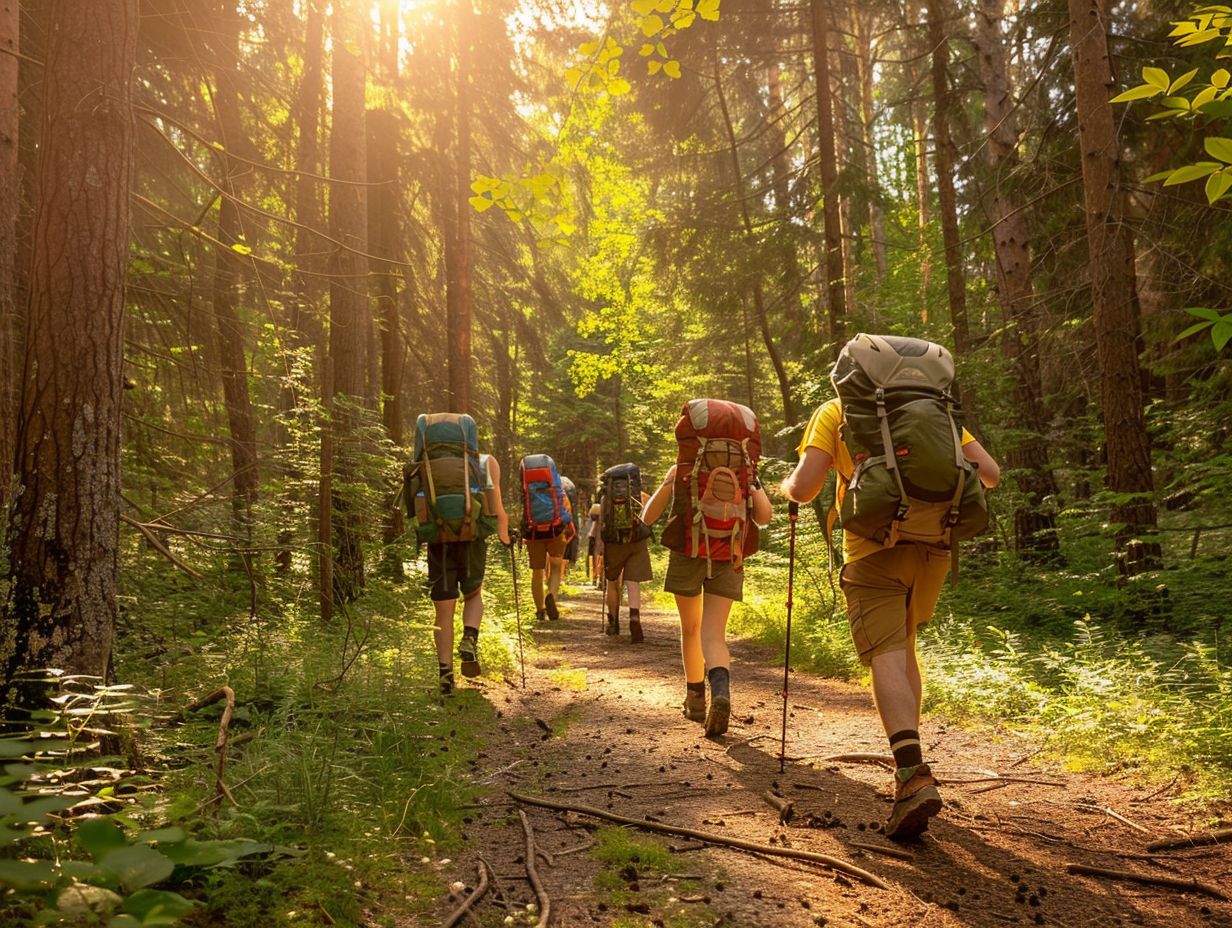
Ahead of embarking on a hiking excursion, it is imperative to ascertain the permit prerequisites, as numerous remote backcountry locations necessitate permits to uphold the conservation of natural resources and regulate visitor influx.
Each destination harbours distinct guidelines and mandates concerning permits, hence it is advisable to conduct thorough research well in advance. Generally, permit particulars can be accessed through national park websites, forest service offices, or outdoor recreation agencies.
The procedures for acquiring permits may exhibit variance; some locations offer online application facilities, while others mandate in-person submissions or postal requests. Failure to procure the requisite permits can culminate in penalties, eviction from the premises, or even legal ramifications.
Adherence to permit protocols is essential in safeguarding the environment and honouring the extant land management protocols.
What Gear Do You Need for a Multi-Day Hiking and Camping Trip?
It is essential to carefully select the appropriate equipment for a multi-day hiking and camping excursion to guarantee safety and comfort. A comprehensive gear list is instrumental in adequately preparing for the challenges encountered in the backcountry.
1. Essential Gear
Necessary equipment for a multi-day hiking excursion encompasses items such as a reliable tent, a sleeping bag, a rucksack, appropriate clothing, and navigation tools like maps and a compass.
A high-quality tent plays a critical role in providing protection from the elements and ensuring a restful night’s sleep. It is advisable to seek out tents constructed from robust materials with adequate ventilation and water resistance.
Selecting a sleeping bag that aligns with the climate conditions of the hiking environment is pivotal, taking into account elements such as temperature ratings and insulation type.
When deliberating on a rucksack, it is essential to prioritise factors such as comfort, durability, and capacity to accommodate all essential gear. Embracing moisture-wicking and quick-drying clothing can enhance comfort levels during extended hikes. Reputable brands like REI and MSR offer reliable selections for these essential items.
2. Optional Gear
Supplementary equipment for a hiking and camping expedition can improve one’s comfort and convenience significantly, encompassing items such as lightweight chairs, portable stoves, and extra clothing layers suitable for varying weather conditions.
The inclusion of these additional items can substantially enhance the overall outdoor experience. Lightweight chairs provide a comfortable resting spot to appreciate the surroundings, while portable stoves facilitate the preparation of hot meals while on the move. Additionally, packing additional clothing layers ensures readiness for any unforeseen changes in weather conditions.
Ahead of embarking on the trip, it is imperative to conduct tests on the optional gear to verify its proper functionality. Factors such as weight, size, and necessity should be taken into consideration when selecting items for packing, as optimising the gear can reduce the burden and amplify the enjoyment of the excursion.
How to Plan Your Route and Itinerary?
The process of planning the route and itinerary for a multi-day hiking excursion entails the meticulous consideration of factors such as determining daily mileage, assessing campsite availability, and strategically scheduling rest days. This comprehensive approach is vital in ensuring a harmonious, well-organized, and gratifying hiking experience.
1. Determine Your Daily Mileage
The calculation of daily mileage serves as a fundamental component in the strategic planning of a hiking expedition. This metric enables individuals to assess a reasonable daily travel distance based on their physical fitness and the topographical complexities of the terrain.
Variables such as elevation gain and trail difficulty are pivotal in determining the daily mileage achievable. It is imperative to factor in personal endurance levels and past hiking experiences when establishing feasible travel objectives.
If there is unforeseen obstacles, such as inclement weather conditions or fatigue, individuals should promptly modify their itinerary by either reducing the daily distance or incorporating additional rest intervals.
Attentiveness to physical cues and adaptability in schedule adjustments can augment the overall hiking experience and ensure a secure journey.
2. Consider Campsite Availability
It is essential to consider campsite availability when planning a route, as ensuring a suitable place to camp each night is vital for safety and comfort during the trip.
Researching campsite options along the route enables individuals to verify availability and make reservations in advance, particularly during peak seasons. It is advisable to have alternative campsites identified in case the primary choice is fully booked.
When selecting campsites, individuals should seek facilities that meet their requirements, such as access to water sources, restroom amenities, and proximity to hiking trails or scenic viewpoints. Prioritising safety entails opting for well-maintained campsites that feature established fire pits and clear areas designated for tent setups.
Factors like distance from the daily travel route, noise levels, and potential wildlife encounters should also be taken into account when choosing campsites for each night of the journey.
3. Plan for Rest Days
Incorporating planned rest days into the itinerary is crucial as it allows the body sufficient time to recuperate and enables individuals to fully appreciate their surroundings without the constraints of daily hiking.
During these well-deserved breaks, individuals have the opportunity to explore nearby attractions, such as scenic viewpoints or engage in local cultural experiences.
Rest days afford individuals the chance to unwind and revitalize at their campsite, whether through indulging in a leisurely meal prepared over a campfire or simply immersing themselves in the natural beauty of the surroundings.
Strategic integration of these rest days can significantly enhance the overall hiking experience, ensuring that individuals are adequately physically and mentally prepared for the challenges that lie ahead.
What Food and Water Should You Bring?
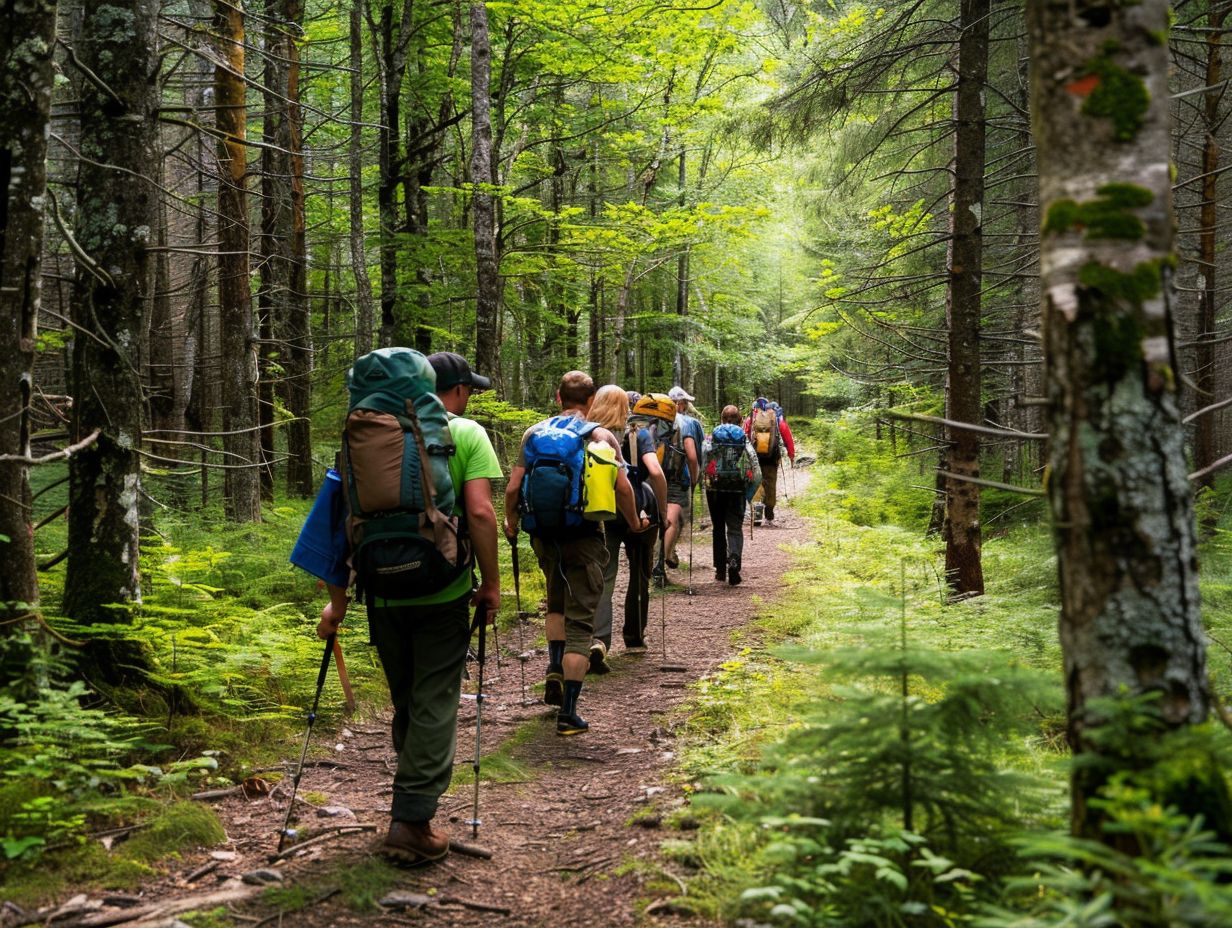
Ensuring the appropriate selection of food and water is crucial for the success of an extended hiking expedition. It is essential to carefully pack lightweight, nutrient-rich food items and plan for access to reliable water sources throughout the entire journey.
1. Calculate Your Calorie Needs
Calculating the calorie needs for a multi-day hiking excursion necessitates a meticulous estimation of the daily energy expenditure and ensuring adequate packing of food supplies to fulfil those requirements.
To ascertain the requisite calorie intake, individuals can apply the subsequent formula: Basal Metabolic Rate (BMR) multiplied by Physical Activity Level (PAL) plus Energy Expenditure from Hiking. The factors of body weight, hiking intensity, and duration are pivotal considerations in these computations.
It is recommended to select food items characterised by high caloric density, such as nuts, dried fruits, energy bars, jerky, nut butter packets, and granola. These provisions offer a lightweight and compact composition while delivering essential nutrients to effectively sustain hiking endeavours.
2. Pack Lightweight, Nutritious Foods
It is imperative to prioritise the selection of lightweight, nutrient-rich foods when preparing for a hiking expedition to minimise the overall weight of your backpack while ensuring adequate energy and essential nutrients for the duration of your trip. Dehydrated meals have emerged as a preferred choice among hikers due to their lightweight nature and minimal preparation requirements.
Additionally, trail mix, comprised of nuts, dried fruits, and seeds, serves as a convenient snack option that offers a well-rounded combination of protein, healthy fats, and carbohydrates necessary to sustain energy levels throughout the journey.
Energy bars represent another viable alternative, providing a quick source of energy and essential nutrients. When strategising your meal arrangements, it is paramount to factor in the calorie density of foods to guarantee a sufficient energy intake without unnecessarily increasing the weight burden of your backpack.
3. Plan for Water Sources
It is essential to plan for water sources along one’s hiking route to ensure access to safe drinking water throughout the journey. One method of identifying natural water sources is to observe signs of vegetation, such as lush greenery or the presence of animals near potential water sources.
Whilst streams, rivers, and lakes are common sources of water in nature, it is crucial to purify water obtained from these sources to eliminate potential contaminants.
Carrying an adequate supply of water or a reliable water filtration system is vital for maintaining hydration and preventing dehydration, particularly in remote locations where access to clean water may be scarce.
Boiling, using water filters, or employing chemical treatments are effective techniques for purifying water and reducing the risk of waterborne illnesses.
How to Prepare Physically and Mentally for a Multi-Day Hiking and Camping Trip?
It is vital to properly prepare oneself both physically and mentally for a multi-day hiking and camping expedition to effectively handle the physical rigours and potential adversities encountered during the excursion.
1. Train for the Hike
Preparing for the hike necessitates engaging in physical training exercises to develop the strength and endurance required for a multi-day hiking expedition. Incorporating a combination of cardiovascular workouts, such as running, cycling, or stair climbing, can enhance cardiovascular fitness, which is pivotal for maintaining energy levels during prolonged treks.
Furthermore, integrating strength training exercises like squats, lunges, and core workouts will bolster muscle endurance and stability on uneven terrain.
Conducting practice hikes on diverse landscapes and inclines will familiarise individuals with the physical rigours of hiking, enabling them to assess their stamina and modulate their pace accordingly.
2. Practice Setting Up Camp
It is advisable to engage in the practice of setting up camp before embarking on a hiking trip, as this can optimise time utilization and mitigate potential frustrations upon reaching the campsite.
Proficiency in camp setup can become ingrained, enabling individuals to concentrate on relishing the natural environment rather than grappling with logistical challenges of arrangement.
Additionally, through practice in camp setup, one can preemptively identify any deficiencies or damages in the equipment, thereby ensuring a seamless and stress-free camping experience during the actual excursion.
3. Mentally Prepare for Challenges
Mentally preparing for the challenges of a multi-day hiking trip entails cultivating resilience and adopting a positive mindset to effectively manage unforeseen obstacles and experiences that may arise.
It is essential to establish realistic expectations when undertaking a multi-day hiking excursion. Acknowledging the possibility of physical exhaustion or unpredictable weather conditions enables individuals to mentally prepare for potential challenges that may present themselves.
Furthermore, employing visualization techniques can serve as a potent strategy. By mentally picturing oneself successfully reaching each milestone along the trail, individuals can enhance their confidence and motivation levels.
Maintaining a positive attitude and concentrating on the present moment, rather than fixating on future uncertainties, can promote a sense of grounding and enable individuals to derive satisfaction from the journey.
What Safety Precautions Should You Take?
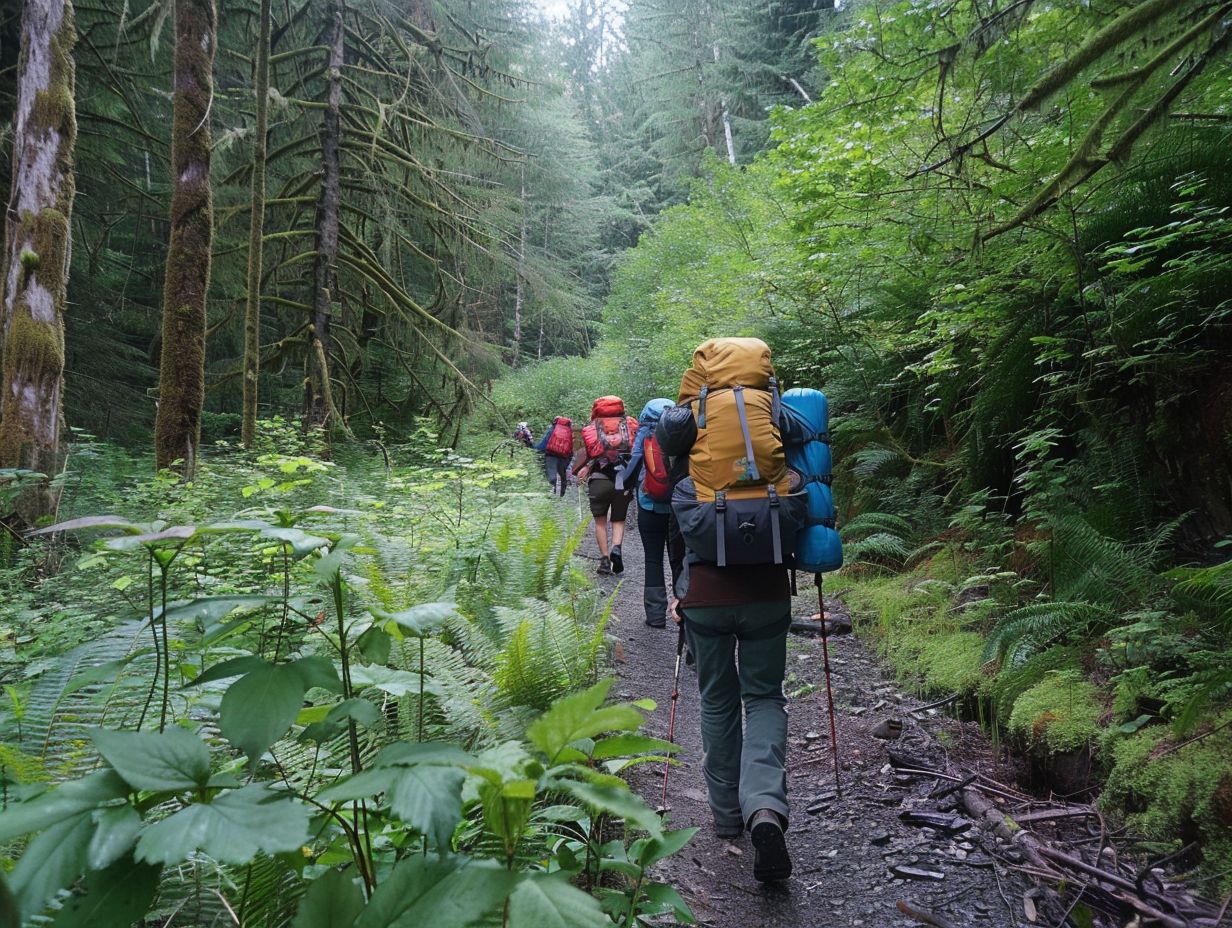
Ensuring proper safety measures are in place is imperative for any hiking expedition. This includes communicating your travel plans to a designated individual, carrying a first aid kit, and adhering to Leave No Trace principles to guarantee personal safety and environmental preservation.
1. Share Your Itinerary with Someone
Ahead of commencing a hiking expedition, it is imperative to share your itinerary with a trusted individual. This practice serves as a fundamental safety precaution, ensuring that someone is aware of your intended route and anticipated return time.
This preemptive action not only establishes a safety net in the event of unforeseen circumstances but also allows for prompt assistance in case of emergencies.
Plus disclosing details regarding planned campsites and providing contact information, it is advisable to provide updates to your designated contact person at specified checkpoints throughout the journey. Leveraging technology such as GPS devices or satellite communicators can facilitate real-time tracking of your location and well-being.
By maintaining open lines of communication and utilising technological aids, you can ensure seamless coordination and peace of mind for both yourself and your designated contact person throughout the duration of your hiking excursion.
2. Pack a First Aid Kit
It is essential to pack a first aid kit as a crucial safety measure for any hiking excursion, ensuring preparedness to address minor injuries and medical emergencies that may arise in remote areas.
Key components to be included in the first aid kit are:
- Adhesive plasters in various sizes
- Antiseptic wipes or cream for wound cleansing
- Tweezers for the extraction of splinters or ticks
- Elastic bandages for the management of sprains
- Painkillers such as paracetamol or ibuprofen
When applying a plaster, it is imperative to ensure that the wound is clean and dry before gently applying pressure to control any bleeding. It is advisable to change plasters consistently to prevent infection and to seek medical attention promptly for deep cuts, burns, or persistent pain.
3. Follow Leave No Trace Principles
Adhering to the Leave No Trace principles is crucial for reducing one’s environmental footprint and ensuring the safety and enjoyment of natural environments for future visitors.
One of the fundamental principles to observe is the proper disposal of waste. This involves carrying out all refuse and uneaten food to prevent environmental pollution. It is imperative to refrain from leaving any traces or altering the landscape in any manner.
Respecting wildlife is another significant principle. It is essential to view animals from a safe distance, refrain from feeding them, and keep pets on a lead to avoid disturbing local fauna.
By abiding by these guidelines, individuals can play a part in conserving natural habitats during their hiking excursions.
Frequently Asked Questions
What are the essential things to consider when planning a multi-day hiking and camping trip?
Some of the essential things to consider when planning a multi-day hiking and camping trip are the trail difficulty, weather forecast, permits and reservations, equipment and supplies, and emergency plans. These factors can greatly affect the success and safety of your trip, so it is important to carefully consider them before embarking on your journey.
How do I choose the right trail for a multi-day hiking and camping trip?
When choosing a trail for a multi-day hiking and camping trip, consider your hiking experience and fitness level, the difficulty of the trail, the distance and elevation gain, and any necessary permits or reservations. You should also research the trail’s terrain, weather conditions, and potential hazards to ensure your safety and enjoyment.
What kind of equipment and supplies do I need for a multi-day hiking and camping trip?
Some essential equipment and supplies for a multi-day hiking and camping trip include a well-fitted backpack, a tent, a sleeping bag and sleeping pad, appropriate clothing and footwear, a stove and cooking utensils, a water filtration system, and a first aid kit. It is important to bring lightweight and durable gear, as well as enough food and water for the duration of your trip.
How can I prepare physically and mentally for a multi-day hiking and camping trip?
To prepare for a multi-day hiking and camping trip, it is important to build up your hiking endurance and strength through regular exercise and training. It is also beneficial to mentally prepare by researching the trail and familiarising yourself with the route, as well as setting realistic expectations for yourself and your abilities.
What should I do in case of an emergency during a multi-day hiking and camping trip?
In case of an emergency during a multi-day hiking and camping trip, it is important to stay calm and assess the situation. If possible, contact emergency services and follow their instructions. Have a plan in place for communication and signals, and make sure to inform someone of your itinerary before starting your trip. It is also important to have a first aid kit and basic knowledge of wilderness first aid.
How can I minimise my impact on the environment while on a multi-day hiking and camping trip?
To minimise your impact on the environment while on a multi-day hiking and camping trip, follow Leave No Trace principles such as properly disposing of waste, using established campsites and trails, and minimising campfires. Respect wildlife and their habitats, and avoid using single-use plastic items. It is also important to pack out all of your trash and leave the area better than you found it.
Share:
By submitting your email address, you are agreeing to receive marketing emails from theexpertcamper.co.uk.
We’ll never share your email address and you can unsubscribe at any time. Privacy policy
Related Posts

A Seasonal Guide To Hiking In The Peak District
Are you ready to lace up your hiking boots and explore the stunning landscapes of the Peak District? This seasonal guide will take you through

Hiking Challenges Preparing For Your First Ultrahike
Are you ready to take your hiking adventures to the next level? Ultra-hiking offers a unique combination of physical and mental challenges, breathtaking scenery, and
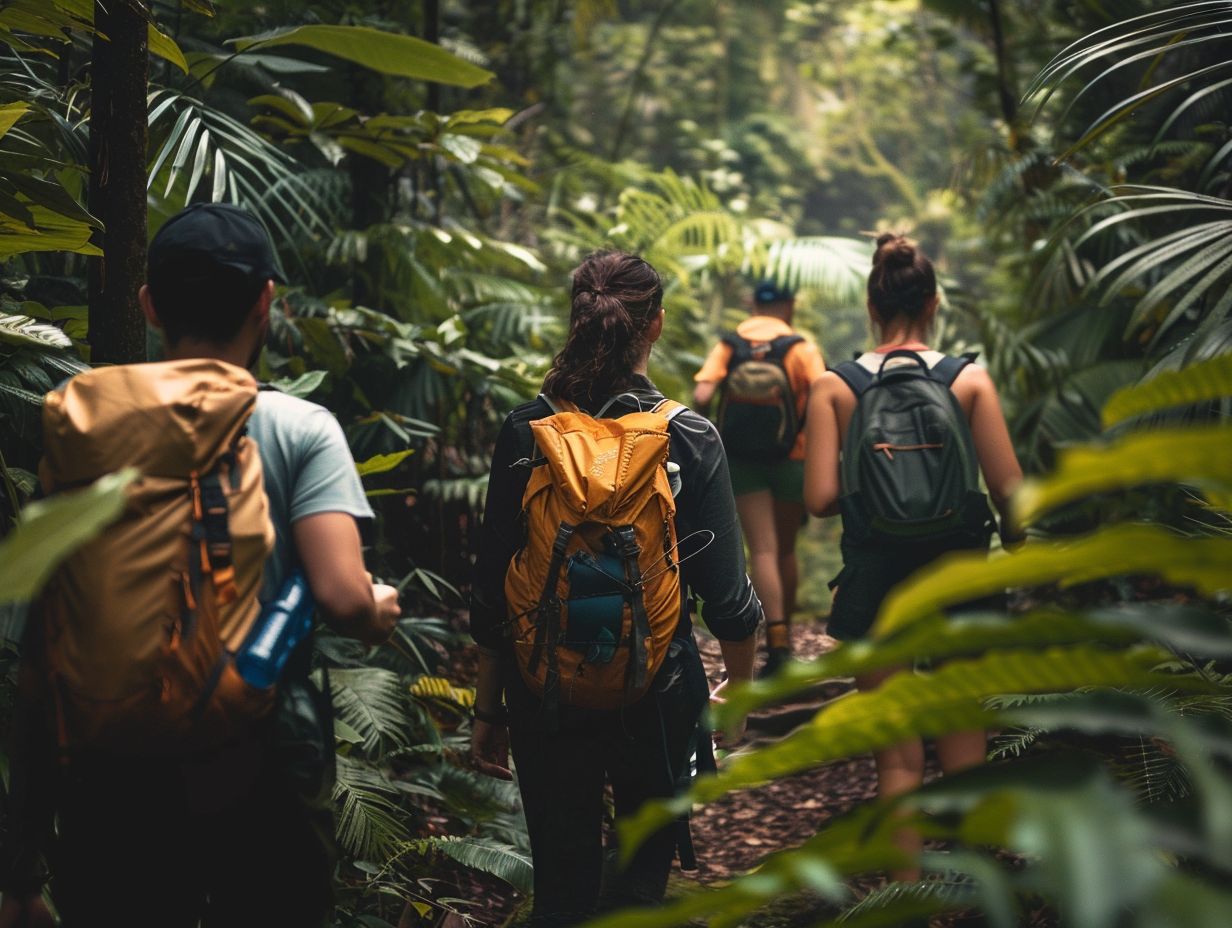
Ecofriendly Hiking Tips For Sustainable Adventures
Are you an outdoor enthusiast looking to minimise your impact on the environment while enjoying the great outdoors? Eco-friendly hiking is the perfect solution! We
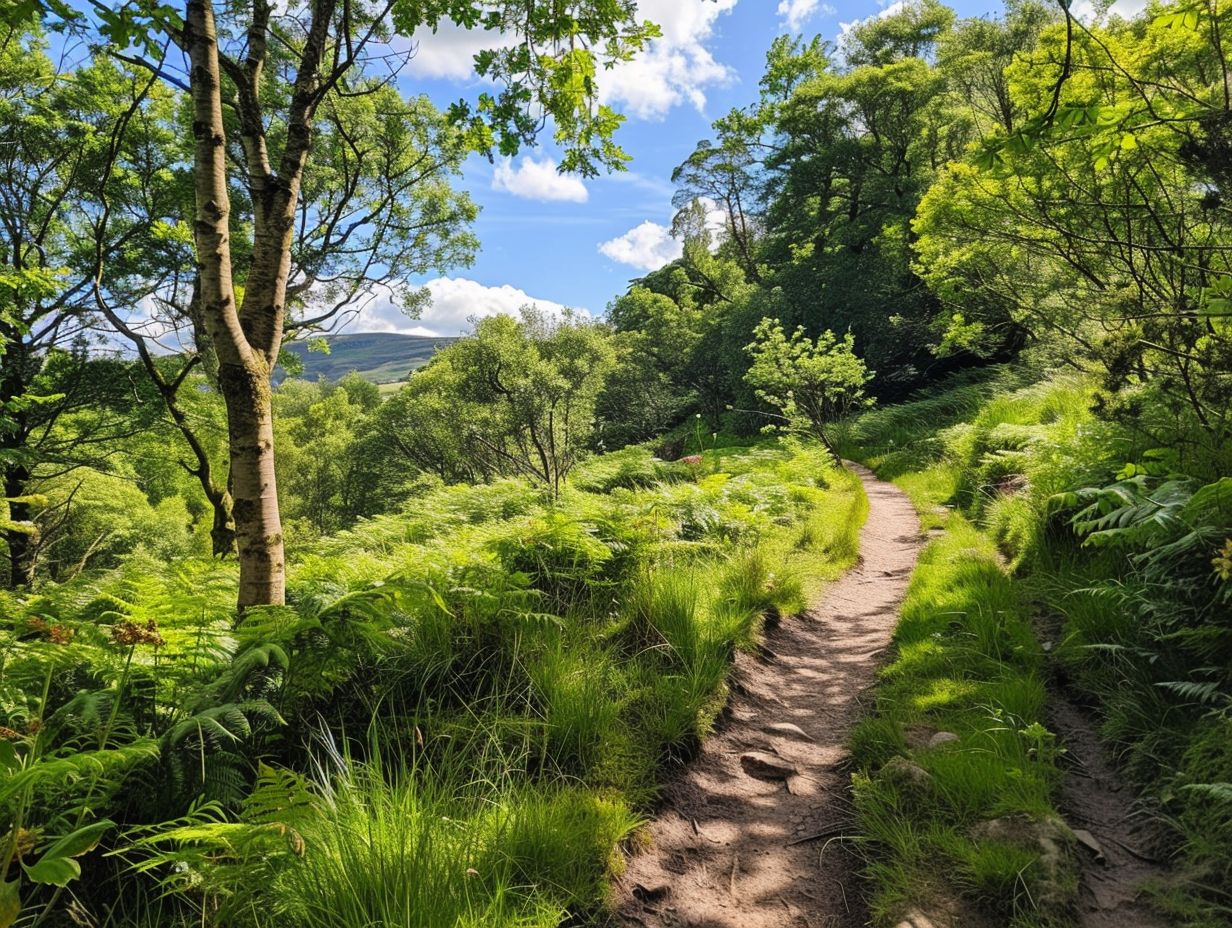
The Best Hiking Trails For Experiencing UK Wildlife
When exploring the picturesque hiking trails of the UK, you can expect to encounter a diverse array of wildlife. From majestic birds soaring overhead to

Wildflower Walks The Best Trails For Nature Lovers
Are you a nature lover looking to embark on a wildflower walk? Explore the best trails for wildflower walks, including [Trail Name 1], [Trail Name


